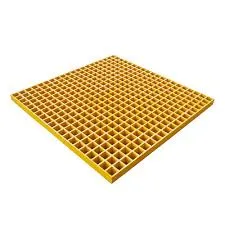
-
 Afrikaans
Afrikaans -
 Albanian
Albanian -
 Amharic
Amharic -
 Arabic
Arabic -
 Armenian
Armenian -
 Azerbaijani
Azerbaijani -
 Basque
Basque -
 Belarusian
Belarusian -
 Bengali
Bengali -
 Bosnian
Bosnian -
 Bulgarian
Bulgarian -
 Catalan
Catalan -
 Cebuano
Cebuano -
 China
China -
 China (Taiwan)
China (Taiwan) -
 Corsican
Corsican -
 Croatian
Croatian -
 Czech
Czech -
 Danish
Danish -
 Dutch
Dutch -
 English
English -
 Esperanto
Esperanto -
 Estonian
Estonian -
 Finnish
Finnish -
 French
French -
 Frisian
Frisian -
 Galician
Galician -
 Georgian
Georgian -
 German
German -
 Greek
Greek -
 Gujarati
Gujarati -
 Haitian Creole
Haitian Creole -
 hausa
hausa -
 hawaiian
hawaiian -
 Hebrew
Hebrew -
 Hindi
Hindi -
 Miao
Miao -
 Hungarian
Hungarian -
 Icelandic
Icelandic -
 igbo
igbo -
 Indonesian
Indonesian -
 irish
irish -
 Italian
Italian -
 Japanese
Japanese -
 Javanese
Javanese -
 Kannada
Kannada -
 kazakh
kazakh -
 Khmer
Khmer -
 Rwandese
Rwandese -
 Korean
Korean -
 Kurdish
Kurdish -
 Kyrgyz
Kyrgyz -
 Lao
Lao -
 Latin
Latin -
 Latvian
Latvian -
 Lithuanian
Lithuanian -
 Luxembourgish
Luxembourgish -
 Macedonian
Macedonian -
 Malgashi
Malgashi -
 Malay
Malay -
 Malayalam
Malayalam -
 Maltese
Maltese -
 Maori
Maori -
 Marathi
Marathi -
 Mongolian
Mongolian -
 Myanmar
Myanmar -
 Nepali
Nepali -
 Norwegian
Norwegian -
 Norwegian
Norwegian -
 Occitan
Occitan -
 Pashto
Pashto -
 Persian
Persian -
 Polish
Polish -
 Portuguese
Portuguese -
 Punjabi
Punjabi -
 Romanian
Romanian -
 Russian
Russian -
 Samoan
Samoan -
 Scottish Gaelic
Scottish Gaelic -
 Serbian
Serbian -
 Sesotho
Sesotho -
 Shona
Shona -
 Sindhi
Sindhi -
 Sinhala
Sinhala -
 Slovak
Slovak -
 Slovenian
Slovenian -
 Somali
Somali -
 Spanish
Spanish -
 Sundanese
Sundanese -
 Swahili
Swahili -
 Swedish
Swedish -
 Tagalog
Tagalog -
 Tajik
Tajik -
 Tamil
Tamil -
 Tatar
Tatar -
 Telugu
Telugu -
 Thai
Thai -
 Turkish
Turkish -
 Turkmen
Turkmen -
 Ukrainian
Ukrainian -
 Urdu
Urdu -
 Uighur
Uighur -
 Uzbek
Uzbek -
 Vietnamese
Vietnamese -
 Welsh
Welsh -
 Bantu
Bantu -
 Yiddish
Yiddish -
 Yoruba
Yoruba -
 Zulu
Zulu
Advanced Fiberglass Winding Machine for Precision Manufacturing
The Advantages of Fiberglass Winding Machines in Composite Manufacturing
In the rapidly evolving world of materials engineering, fiberglass has emerged as a crucial component in various industries, including aerospace, automotive, and construction. As demand for high-performance composite materials rises, so does the need for efficient manufacturing processes. A pivotal technology in this realm is the fiberglass winding machine, which plays a significant role in the production of fiberglass components.
Fiberglass winding machines utilize an advanced technique known as filament winding. This process involves winding continuous strands of fiberglass around a mold to create strong, lightweight structures. The primary advantage of this method lies in its ability to produce parts with high strength-to-weight ratios, making it ideal for applications where reducing weight while maintaining structural integrity is paramount.
One of the most significant benefits of fiberglass winding machines is their efficiency. These machines are capable of automating the winding process, minimizing labor costs and reducing the potential for human error. Automation ensures consistency in the production process, leading to uniform quality in the final product. This is particularly important in industries such as aerospace, where precision engineering is vital. With the help of advanced software, manufacturers can also optimize the winding paths, ensuring material is used effectively, thus reducing waste and increasing sustainability.
Another key advantage of fiberglass winding machines is their versatility. They can accommodate a variety of mold shapes and sizes, making them suitable for producing different types of components, from tanks and pipes to complex structural parts. This adaptability allows manufacturers to meet diverse client requirements without needing multiple pieces of equipment. Furthermore, as technology advances, modern fiberglass winding machines are becoming more capable of integrating with other manufacturing processes, such as resin infusion and curing, thereby streamlining production.
fiberglass winding machine

Cost-effectiveness is also a significant factor driving the adoption of fiberglass winding machines. Although the initial investment might seem high, the long-term savings in labor, material waste, and production time often outweigh the costs. Additionally, these machines enhance the quality of the products produced, which can result in higher selling prices and profit margins, thus providing a solid return on investment.
Moreover, the fiberglass winding process is conducive to the use of various resin systems, allowing manufacturers to tailor products for specific applications. This flexibility opens the door for innovations in composite materials, enabling the development of new products that meet stringent performance standards.
As environmental concerns intensify, the fiberglass winding machine also aligns well with sustainable manufacturing practices. The closed-loop system often employed in these machines reduces volatile organic compound emissions associated with traditional methods. Additionally, the recyclability of fiberglass composites further emphasizes their role in promoting a circular economy.
In conclusion, fiberglass winding machines represent a significant advancement in composite manufacturing technology. With their efficiency, versatility, cost-effectiveness, and sustainability benefits, they are poised to revolutionize industries increasingly reliant on high-performance materials. As technology continues to advance, we can expect fiberglass winding machines to play an even more critical role in meeting the demands of future engineering challenges.









